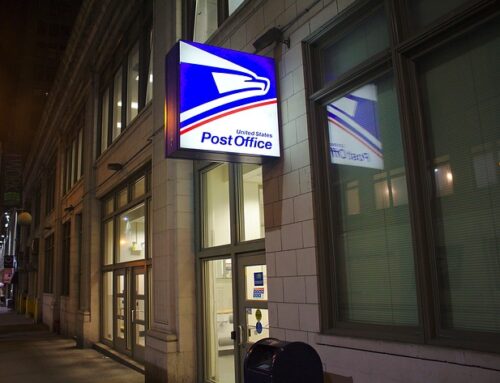The Evolution of US Mail and the Printing and Mailing Industry
The Impact of Machine-Made Envelopes
The history of the United States Postal Service (USPS) and the printing and mailing industry is a testament to the remarkable evolution of communication and the advancements in technology. Over the years, the USPS has played a vital role in connecting individuals and businesses across the nation. Simultaneously, the printing and mailing industry has undergone significant transformations, embracing innovative techniques and equipment to enhance efficiency and deliver superior services. In this blog post, we will delve into the fascinating journey of the US mail and explore the profound impact of machine-made envelopes on the printing and mailing industry.
The Early Years of US Mail
The history of US mail dates back to colonial times when couriers and riders carried letters between settlements. The establishment of the United States Post Office Department in 1775 marked a pivotal moment, as it laid the foundation for a national mail system. Initially, mail was transported by horseback, stagecoach, or even on foot, resulting in slow and unreliable delivery. However, with the expansion of railroads in the mid-19th century, the USPS adopted the use of trains, enabling faster and more efficient mail transportation.
The Birth of the Printing and Mailing Industry
As the demand for mailing services grew, the printing and mailing industry emerged to cater to the needs of businesses and individuals. In the early days, printing was a labor-intensive process, with documents written or printed by hand. However, the introduction of the printing press by Johannes Gutenberg in the 15th century revolutionized the industry, enabling the mass production of printed materials.
The Impact of Machine-Made Envelopes
One significant milestone in the evolution of the printing and mailing industry was the advent of machine-made envelopes. Prior to the 19th century, envelopes were typically handmade, a time-consuming and costly process. However, the development of envelope-making machines in the early 1800s revolutionized the industry.
The Increasing Pace of Change
The United States Postal Service has continuously adapted to technological advancements to meet the changing needs of society. The blog will discuss how the USPS embraced innovations such as automation, barcode systems, and sorting technologies, leading to improved accuracy, faster delivery times, and enhanced tracking capabilities.
What It All Means
The evolution of the US mail and the printing and mailing industry is a testament to human ingenuity and the desire for more efficient communication. From the humble beginnings of handwritten letters to the advent of machine-made envelopes and advanced mailing technologies, the industry has come a long way. The integration of automation, sophisticated printing techniques, and digital advancements has paved the way for faster, more accurate, and personalized communication.
As we reflect on the journey of the US mail and the printing and mailing industry, it becomes evident that these advancements have not only transformed the way we send and receive mail but have also opened up new possibilities for businesses and individuals alike. Today, the industry continues to evolve, embracing digital technologies, data-driven solutions, and sustainable practices to meet the ever-changing needs of the modern world.
Conclusion
In conclusion, the evolution of the US mail and the printing and mailing industry is a testament to the relentless pursuit of efficiency, speed, and innovation. From the early days of hand-delivered letters to the introduction of machine-made envelopes and the adoption of advanced technologies, the industry has consistently adapted to societal and technological changes. The printing and mailing industry plays a crucial role in facilitating communication, enabling businesses to reach their customers effectively and individuals to connect with one another.
As we navigate the digital age, the industry continues to transform, integrating digital solutions, automation, and sustainable practices to streamline operations and reduce environmental impact. The USPS and printing and mailing companies have embraced these changes, ensuring that businesses have access to efficient, reliable, and environmentally conscious services.
Whether it is the history of the US mail, the rise of the printing and mailing industry, or the impact of machine-made envelopes, understanding the evolution of these sectors provides valuable insights into the complex ecosystem that enables the delivery of bills, statements, and other important communications. By appreciating the advancements made over the years, businesses can make informed decisions when selecting printing and mailing partners, ensuring efficient communication and successful mail campaigns.
As technology continues to advance and new innovations emerge, it is exciting to envision what the future holds for the printing and mailing industry. With ongoing efforts to improve efficiency, sustainability, and customer experiences, the industry is poised to continue playing a vital role in connecting businesses and individuals across the nation, bridging gaps and fostering communication in the digital era.
Dates in History for The USPS
Here are some significant dates associated with the United States Postal Service (USPS) throughout its history:
- 1775: The United States Post Office Department is established by the Second Continental Congress, marking the official beginning of the USPS.
- 1792: The Postal Act of 1792 is enacted, establishing the basic framework for the organization and operation of the postal system in the United States.
- 1847: The first postage stamps, featuring a portrait of Benjamin Franklin, are issued.
- 1860: The Pony Express, a mail delivery service known for its fast delivery using horse-mounted riders, begins operations.
- 1863: Free city mail delivery is introduced in larger cities, allowing mail to be delivered directly to homes and businesses.
- 1873: The Comstock Act is passed, making it illegal to send “obscene, lewd, or lascivious” materials through the mail.
- 1913: The introduction of parcel post service revolutionizes the mailing of packages and goods.
- 1958: The USPS introduces the first ZIP codes, a system of numerical codes used for efficient mail sorting and delivery.
- 1971: The United States Postal Service is reorganized as an independent agency within the federal government, becoming the USPS we know today.
- 1974: The USPS introduces the first automated mail processing center, using machines to sort mail based on ZIP codes.
- 1983: ZIP+4 codes are implemented, providing even more precise location information for mail sorting and delivery.
- 1992: The USPS launches the Postal Service Network, a nationwide computer network to streamline operations and improve tracking and customer service.
- 1998: The USPS establishes the Electronic Postmark program, allowing electronic documents to be timestamped and verified for legal and business purposes.
- 2001: In the aftermath of the September 11 attacks, the USPS plays a critical role in national security efforts, implementing enhanced security measures for mail screening and processing.
- 2013: The USPS announces its decision to end Saturday mail delivery, except for packages, in order to reduce costs.
- 2020: The USPS faces challenges and increased demands during the COVID-19 pandemic, with a surge in package deliveries and changes to operational procedures.
Today’s USPS Rates
Here are the domestic postage rates for commonly used services:
First-Class Mail:
- Letters (1 oz. or less): $0.58
- Additional ounces for letters: $0.20 per ounce
- Postcards: $0.40
Priority Mail:
- Flat Rate Envelope: $7.95 (commercial base price)
- Small Flat Rate Box: $8.45 (commercial base price)
- Medium Flat Rate Box: $15.50 (commercial base price)
- Large Flat Rate Box: $21.90 (commercial base price)
Priority Mail Express:
- Flat Rate Envelope: $26.35 (commercial base price)
- Legal Flat Rate Envelope: $26.50 (commercial base price)
- Padded Flat Rate Envelope: $26.95 (commercial base price)
USPS Retail Ground (formerly Standard Post): Rates vary based on weight, size, and destination. It is best to consult the USPS website or a postal representative for specific rates.
These rates are for domestic mail within the United States. International postage rates and rates for other USPS services such as Media Mail, Certified Mail, and Registered Mail can be obtained from the USPS website or by contacting the USPS directly. Remember, postage rates are subject to change, so it is essential to check the USPS website or consult with the USPS for the most accurate and up-to-date pricing information.




